by Robert Studwood Hues, Famous Art Critic
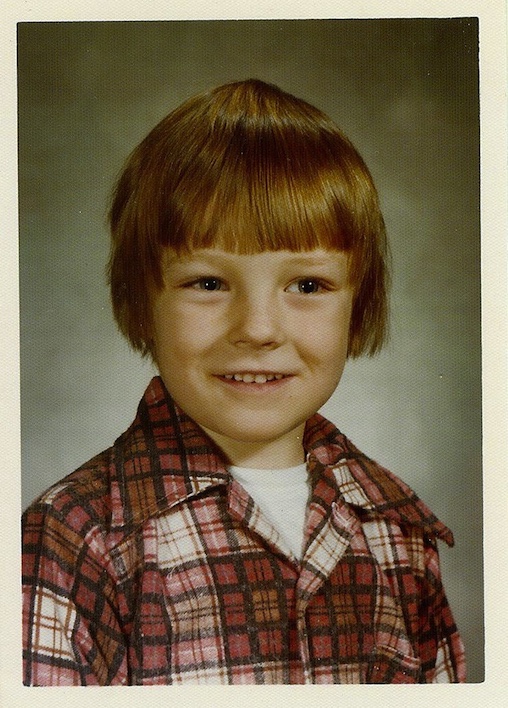
What follows is the second part of a somewhat pretentious examination of Chris Auman’s artwork. It originally appeared in Reglar Wiglar Magazine #28.
Sucking in the 70s?
If the 1960s were an era of vibrant colors and psychedelic visuals, the 1970s were a time of earthy browns, mustardy yellows, and a variety of ugly hues.
Beige ruled. Fuschia drooled. But if drab colors were the order of the day, the memo got lost before it could reach a young Midwestern artist named Chris Auman.
In the ‘70s, the six-year-old’s use of brightly colored crayons and markers stood out like a tulip in a turd and called attention to controversial social issues of the time.
Continuing with the outsider tradition he developed over his first six years, Auman was as influential in the latter half of the decade as he was in the first.
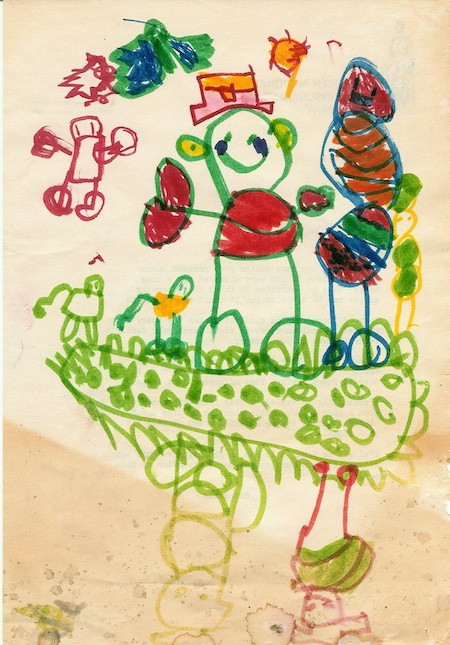
1976-1979
Nineteen hundred seventy-six was a time for celebration in America. It was the bicentennial of the U.S. — two hundred years of what Alexis de Tocqueville called the “Great American Experiment.”
It was a time to finally put an end to the divisive politics of the ‘60s, kick back, and relax with bad weed, bad beer, and horrible music.
It was a time to Welcome Back Kotter and invite in Donny & Marie (she’s a little bit country, he’s a little bit rock and roll—a very little bit rock and roll).
In 1976, the pop charts were full of disco and silly love songs. Star Wars was just about to begin its ascendency as a pop culture juggernaut that would rule our lives forever. We met Rocky Balboa, a failed everyman who found redemption. The Omen put the fear of the devil into us and King Kong was just a big old, loveable gorilla.
That year, a peanut farmer from Georgia, who admitted knowing lust in his heart, was elected President — lust in the heart now permitted while marijuana smoke in the lungs would take another decade and a half to be accepted.
It was in 1976 that the young artist tried to make sense of the first five years of his existence: the destruction, the carnage, the horror!
It was through a series of drawings depicting scenes of war and military life that Auman was able to comment on world events. Authority figures also figured prominently in Auman’s work from this period, as did the possibilities of what lies just beyond our reach: the stars!
War in Pieces
Though the war in Vietnam officially ended in 1975, the carnage and devastation the young artist saw on his family’s tiny black-and-white TV stayed with him throughout his formative years.
These images led him to create stunning depictions of battle scenes rendered in full color. Brilliant oranges and martial greens commanded the page as themes of patriotism, cowardice, and the frailty of the human condition lay just below the surface.
Retreat!
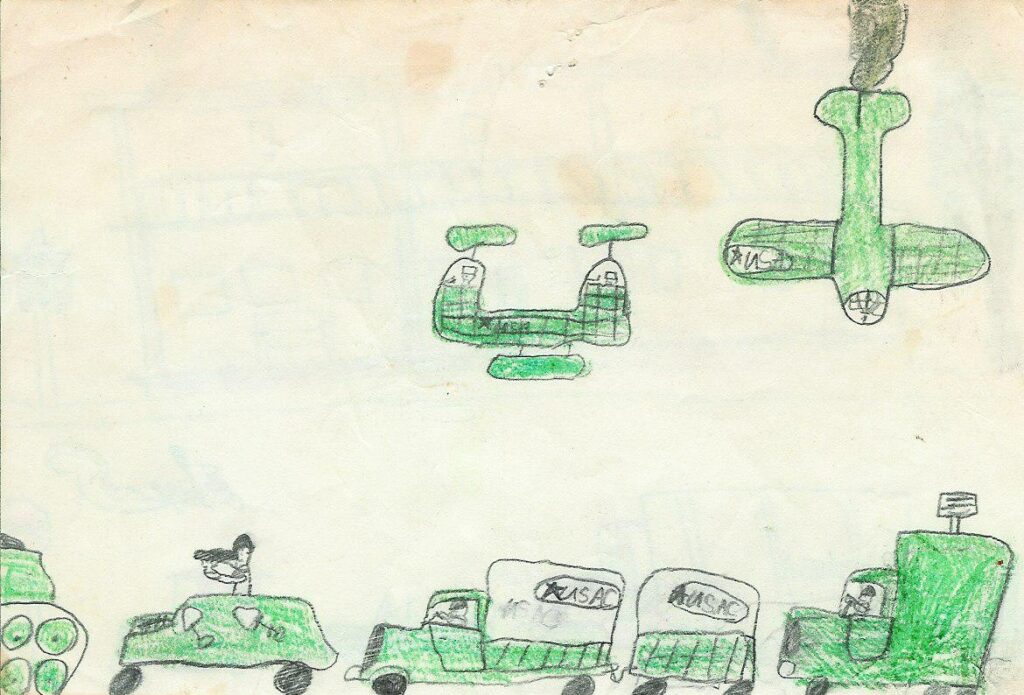
Saigon fell in 1975. It was a humiliating defeat for a military that was accustomed to kicking ass and taking names, or not taking names as they saw fit.
Submerged
Auman used a submarine bombing as a metaphor for the sinking of America’s global influence due to the futile implementation of military solutions for the growing threat of Communism worldwide. Or something like that.
Through the bold use of color, Auman brought this ugly truth home to average kindergarteners who were either incapable or unwilling to wrap their tiny little brains around the concept.

Hey Sailor!
Auman was not afraid to tackle hot-button issues like Gays in the Military many years before they would become hot-button issues. This was even before people said things like “hot-button issues.”
Don’t Ask Don’t Tell wasn’t being asked (or told) and certainly, no one was asking the opinions of seven-year-olds. Auman had an opinion, however, and he was not afraid to share it visually.
Some art historians claim that Auman’s artwork had a major impact on the American subconscious and that he was able to influence public opinion and government policy in an extremely subtle way. This is probably true.
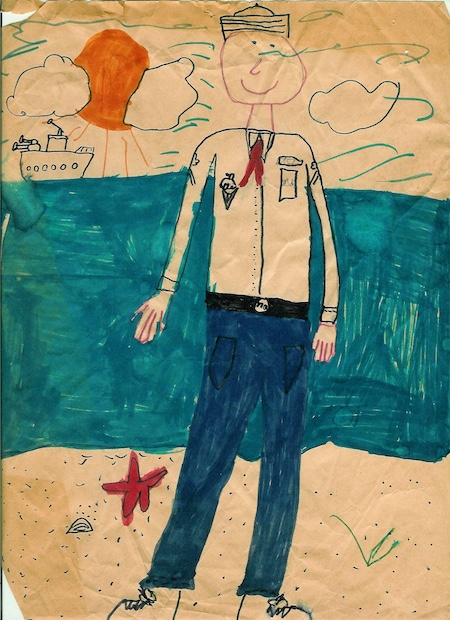
A Walk on the Wild Side
A healthy suspicion of authority informed Auman’s work throughout 1978. Inspired by America’s mythical outlaw motorcycle clubs, his Wild Ones series showed solidarity with the self-proclaimed One-Percenters.
Sometimes innocent civilians were the victims when the few rejected the rules of the many and lived according to their own laws. In Wild Ones Part 2, Auman explored this theme in great detail. The rebels in the piece smile and laugh as they leave an army guy and a driverless blue Pinto in a cloud of noxious fumes.
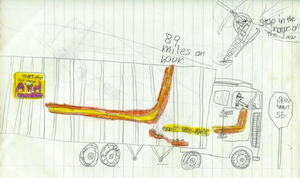
Civility was the casualty in this war waged on society by outcasts who came together to fight the “Normals.” But what does it mean to be a rebel in America? Is it about more than driving a semi across Dixie with a load of Coors? Why are so many truckers friends with monkeys anyway?
These are all questions Auman tried to answer through his art.
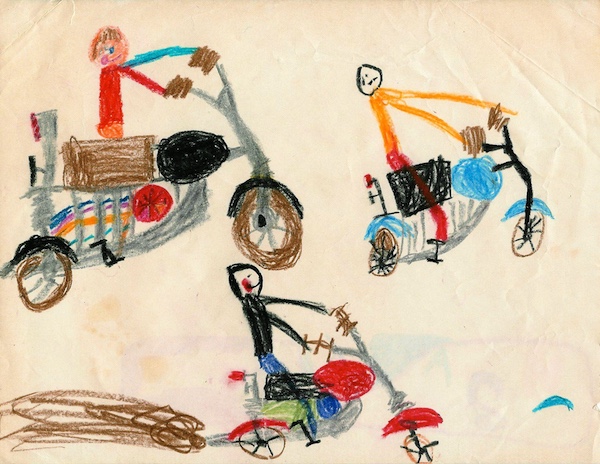
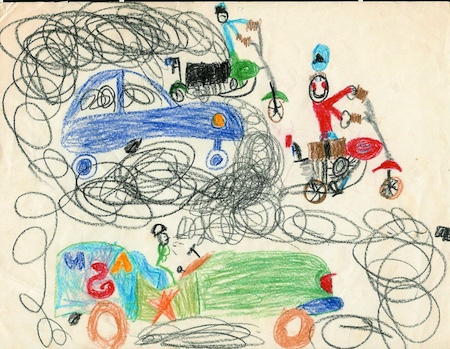
Lost in Space
What lies beyond the Milky Way? Yodas? Wookies? Mars Bars? Chris Auman’s artwork yearned to find out.
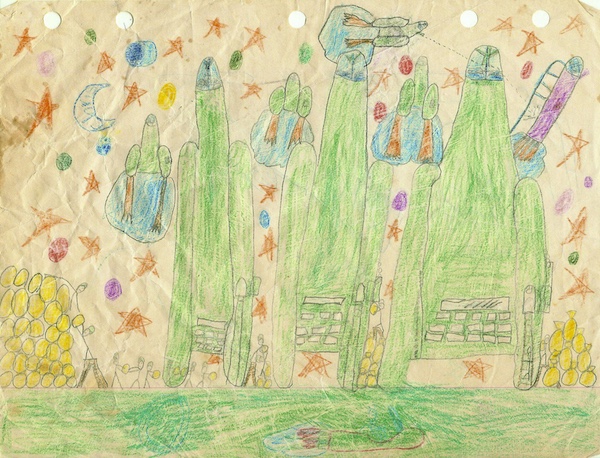
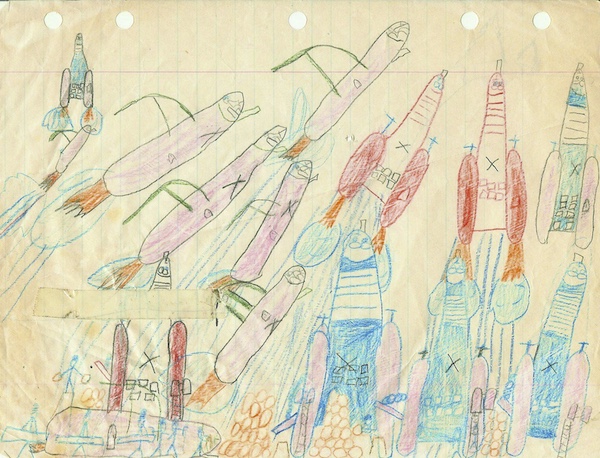
War and Space
As one decade ended and another began, Star Wars raged on and Battlestar Galactica plotted a course through the hearts and imaginations of young Americans.
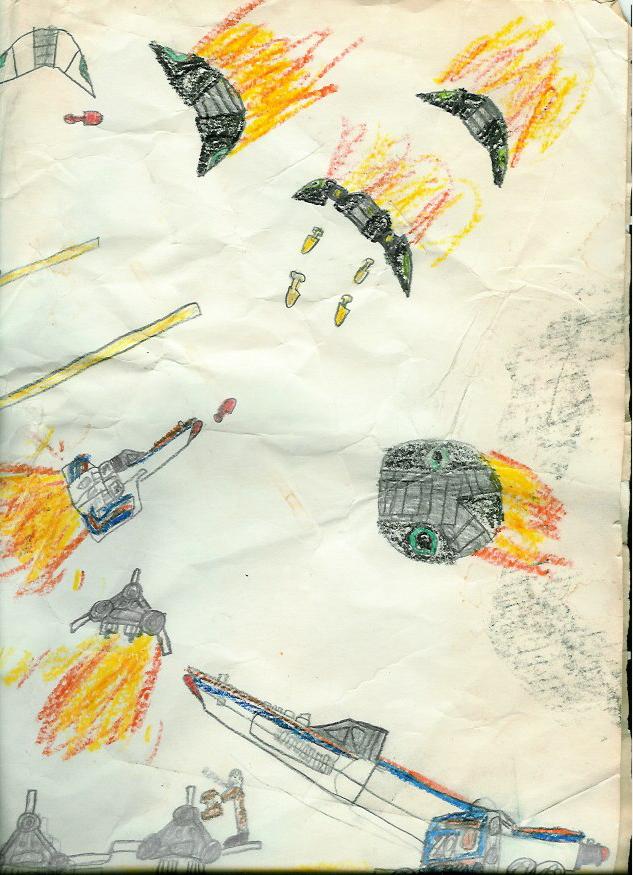
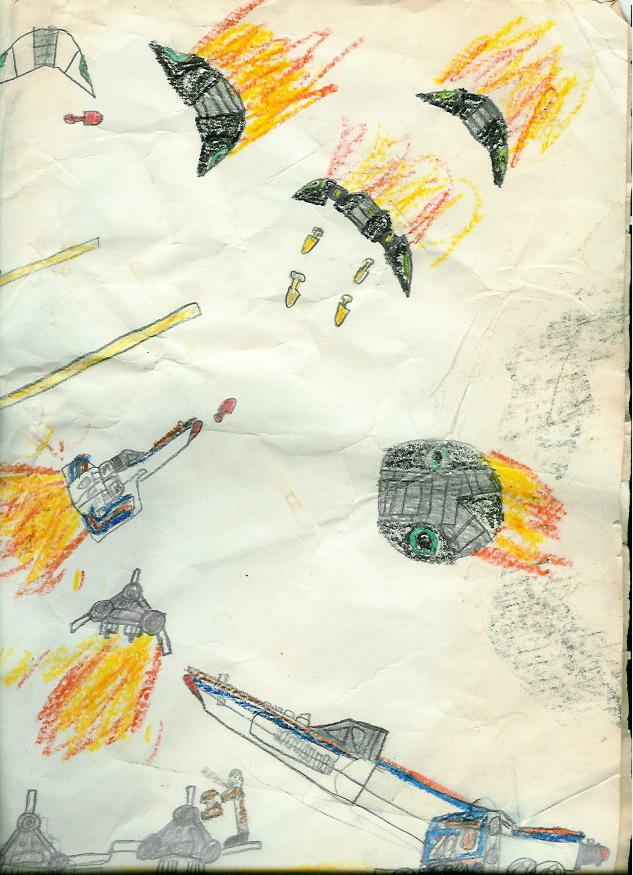
Part 3
Read Part 3 of this fascinating expose of Chris Auman’s artwork.
